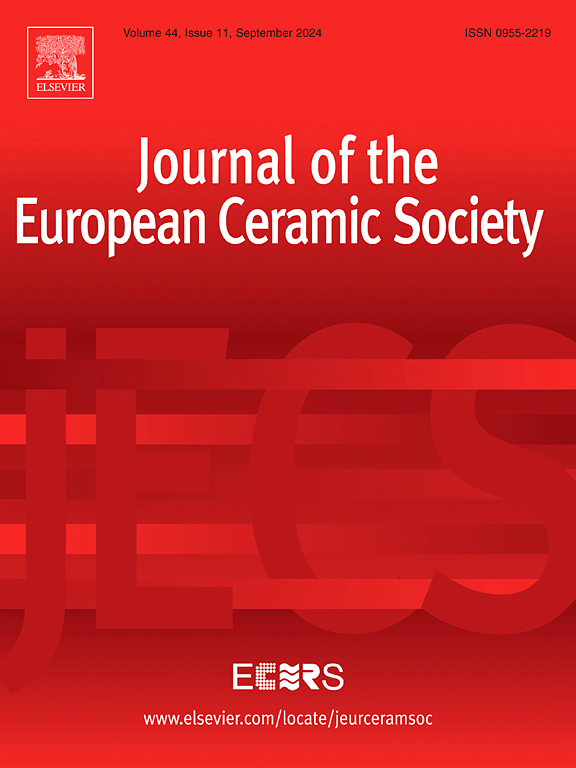电铸过程中由TiO2金红石到锐钛矿的相变
IF 5.8
2区 材料科学
Q1 MATERIALS SCIENCE, CERAMICS
Journal of The European Ceramic Society
Pub Date : 2025-06-04
DOI:10.1016/j.jeurceramsoc.2025.117597
引用次数: 0
摘要
研究了x射线纳米束辐照的影响,以及在金红石单晶上制作的类忆阻器件的金属电极之间的后续放电。光子通量约为6 × 1012光子/秒的x射线照射在74 × 60 nm2的面积上,照射时间为每点数十秒,已经能够在电极之间形成导电路径,从而指导放电过程。亚微米空间分辨率的Ti K-edge XANES成像结果显示,前边缘峰的结构变化很小,表明影响区域存在锐钛矿相,微拉曼成像也证实了这一点。这意味着在放电过程中会发生非常强烈的焦耳加热(T >; 2140 K),然后是非常快速的冷却过程。这种金红石到锐钛矿的转化代表了一种新的电方法,可以从金红石单晶中形成局部锐钛矿纳米颗粒,这可能有助于特定的应用。本文章由计算机程序翻译,如有差异,请以英文原文为准。
Guided phase transition from TiO2 rutile to anatase during electroforming of memristor-like devices
The effect of X-ray nano-beam irradiation has been investigated, along with a subsequent electric discharge between the metallic electrodes of memristive-like devices fabricated on top of rutile single crystals. X-ray irradiation with a photon flux of about 6 × 1012 photons/second impinging on an area of 74 × 60 nm2, and with irradiation times of the order of tens of seconds per point, has been able to pattern a conducting path between the electrodes, which has guided the electric discharge process. The results from Ti K-edge XANES mapping with submicron spatial resolution show small changes in the configuration of the pre-edge peaks, suggesting the presence of anatase phase in the affected region, which is also confirmed by micro-Raman mapping. This implies the occurrence of very intense Joule heating during the electric discharge (T > 2140 K), followed by a very quick cooling process. This conversion of rutile to anatase represents a novel electrical method for the formation of localized anatase nanoparticles from rutile single crystals, which may be of help for specific applications.
求助全文
通过发布文献求助,成功后即可免费获取论文全文。
去求助
来源期刊

Journal of The European Ceramic Society
工程技术-材料科学:硅酸盐
CiteScore
10.70
自引率
12.30%
发文量
863
审稿时长
35 days
期刊介绍:
The Journal of the European Ceramic Society publishes the results of original research and reviews relating to ceramic materials. Papers of either an experimental or theoretical character will be welcomed on a fully international basis. The emphasis is on novel generic science concerning the relationships between processing, microstructure and properties of polycrystalline ceramics consolidated at high temperature. Papers may relate to any of the conventional categories of ceramic: structural, functional, traditional or composite. The central objective is to sustain a high standard of research quality by means of appropriate reviewing procedures.
 求助内容:
求助内容: 应助结果提醒方式:
应助结果提醒方式:


